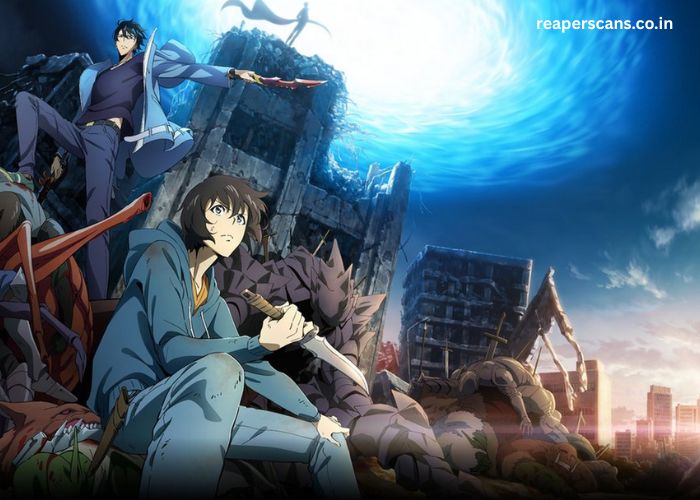Anime is not just a form of entertainment; it’s a culture, a lifestyle, and an entire world that has captured the hearts of millions of fans globally. As anime grows in popularity, so do its set of unwritten guidelines that help define its world. The term “Anime Rule” can refer to the culture’s common norms, traditions, and principles that all anime fans should know about.
Anime is a genre with deep roots in Japanese tradition, but over time, it has become a global phenomenon. As the anime world expands, there are certain unspoken rules that guide the behavior of both creators and viewers. These rules shape the way anime is perceived and consumed. If you’re new to anime or even a seasoned fan, understanding these essential rules will enhance your experience and connection with the anime community.
This blog post will walk you through some of the essential rules in anime culture that every fan should understand and follow.
Key Points:
- Respect for Japanese culture is central to understanding anime.
- Fandom behavior includes maintaining a respectful and inclusive environment.
- Diverse genres and themes define the anime landscape, ensuring something for every viewer.
What Is the First Rule in Anime Culture?
The first and most important rule in anime culture is respect for the medium itself. This includes respecting the art, the creators, and the fans. Anime is an expression of creativity, often reflecting deep themes and philosophical questions. Understanding the respect for this craft is paramount.
Anime has evolved from a niche Japanese entertainment medium to a global cultural force. With its rise, fans worldwide have embraced its diverse genres, including action, romance, sci-fi, slice of life, and much more. Each genre offers a unique perspective, and respecting these offerings, especially as they reflect various aspects of Japanese culture, is essential for any anime viewer.
Anime fans should also respect the intellectual property of creators. Watching legally, supporting the official releases, and respecting copyright laws are integral to the anime world. Additionally, acknowledging the hard work of animation studios, voice actors, and directors helps ensure the longevity and growth of anime culture.
What Are the Etiquette Rules for Anime Fans?
Anime fans worldwide share a common respect for the culture, but what sets anime fandom apart is the way fans behave both online and offline. One of the core rules in anime culture involves maintaining proper etiquette when discussing anime. From online forums to cosplay events, there are a few key etiquettes to remember.
1. Don’t Spoil the Plot
Spoilers can ruin the experience for others, especially those who haven’t caught up to the latest episode. Always use spoiler tags when discussing pivotal moments from a show.
2. Respect for Different Tastes
There are numerous genres and styles of anime, from shonen (action-packed) to shojo (romantic), and from horror to slice-of-life. It’s crucial to respect other fans’ tastes and interests. Even if a particular show doesn’t appeal to you, never belittle others for their preferences.
3. Don’t Overhype or Trash Shows
While it’s okay to discuss what you love or dislike, keep the conversation respectful. Overhyping a series or excessively trashing it can alienate others who may have different opinions. Embrace differing views and approach them with maturity.
Remember, being open-minded is key to thriving in the anime community.
How Do the Rules Apply to Anime Creators?
Anime creators play a significant role in shaping the anime industry. The rules surrounding them go beyond just creating entertainment—they involve respecting their artistic vision. This means appreciating the diversity of anime and the work that goes into every series, including long hours of production, voice acting, and animation.
Understanding the Value of Anime Creators
Creators often put in years of work to bring an anime to life. From concept to storyboard to final production, it’s a lengthy and complex process. Therefore, it’s vital to acknowledge their hard work and avoid trivializing the effort.
Moreover, as a fan, supporting the official releases and purchasing anime legally shows your appreciation. Piracy is a major issue in the anime industry, and while it might seem tempting to watch free versions of shows, this damages the creators and the anime industry in the long run.
Tip: Always support official streaming platforms that provide anime for a fair price.
How Do Anime Fans Show Their Support?
One of the unique aspects of anime culture is how fans express their support for a series. This can be seen in various ways, from attending conventions and participating in online discussions to purchasing merchandise and sharing their love for their favorite shows.
1. Cosplay
Cosplaying as a character from your favorite anime is one of the most visible forms of fan expression. Fans put a lot of time and effort into making costumes that match the anime’s aesthetic, often at conventions or during special events.
2. Fan Art and Fanfiction
Many fans love to create their own artwork or write stories based on the anime world. Sharing fan art or fanfiction is a fun way to express personal interpretations of the characters and plots, while also paying homage to the original creators.
3. Merchandise Purchases
Purchasing official anime merchandise like figures, posters, and clothing helps support the anime industry. It shows your enthusiasm and provides financial backing for creators to continue their work.
Reminder: Merchandise purchases help fuel the anime industry’s growth and sustain creators’ livelihoods.
How Do Anime Fans Respect Cultural Sensitivities?
Anime has grown beyond Japan and is now enjoyed by fans all over the world. However, with its growth comes the responsibility of respecting the cultural aspects embedded in anime. Understanding Japanese culture is vital when watching anime because certain customs, beliefs, and values often shape the stories and characters.
For example, certain behaviors in anime, like the use of honorifics (like “-san” or “-sama”) or references to Shinto or Buddhist practices, can be unfamiliar to non-Japanese viewers. Learning about these cultural nuances enhances the viewing experience and promotes cultural sensitivity.
Anime can also portray strong themes of family, respect, and tradition—values that may differ from Western ideals. Being open to learning about these cultural differences helps create a more respectful viewing experience.
Conclusion
Anime is more than just animated entertainment; it’s a culture built on respect, creativity, and appreciation for art. From following etiquette in fandom interactions to supporting creators and respecting cultural sensitivities, these rules help shape a vibrant and diverse anime community. By adhering to these guidelines, fans ensure that anime remains a welcoming, respectful, and enriching experience for all.
So, whether you’re a casual viewer or a hardcore fan, embracing these core rules will enrich your anime journey and bring you closer to understanding and appreciating the world of anime.
FAQ’s
- What Are the Basic Rules of Anime Culture?
- The basic rules of anime culture include respecting creators, avoiding spoilers, and maintaining proper etiquette in online and offline discussions.
- How Can Fans Support Anime Creators?
- Fans can support creators by watching anime through legal streaming platforms, purchasing merchandise, and appreciating the work of the animators and voice actors.
- Is Cosplay a Popular Form of Expression in Anime Culture?
- Yes, cosplay is a popular way for fans to express their love for anime characters by creating costumes and attending conventions.
- Why Is Cultural Sensitivity Important in Anime?
- Cultural sensitivity is essential because anime often reflects Japanese traditions, beliefs, and values. Respecting these differences enhances the viewer’s experience.
- How Can I Avoid Spoiling Anime for Others?
- Always use spoiler tags when discussing key plot points, and avoid revealing major story twists until others have had the chance to catch up.





